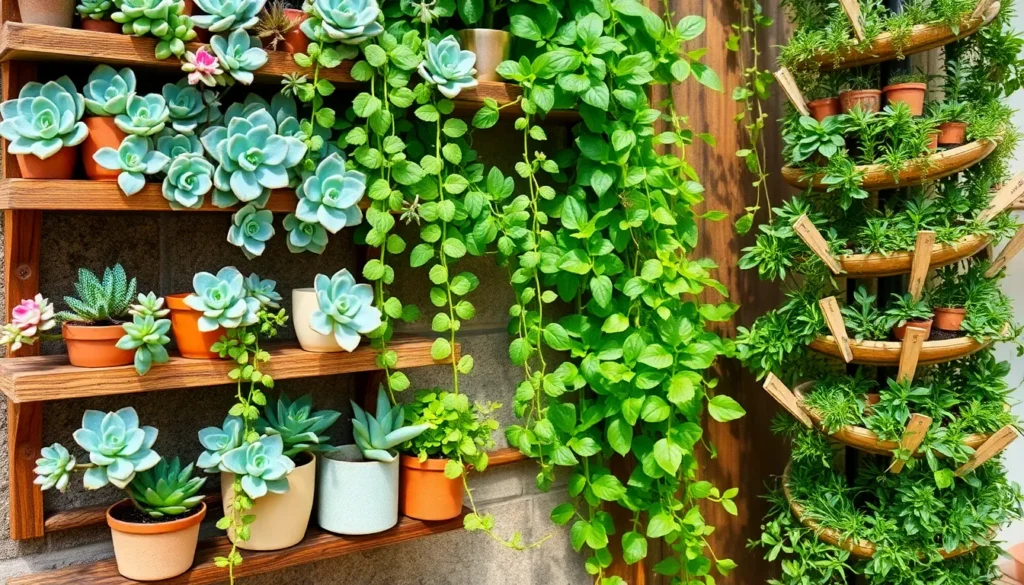Welcome to the vibrant world of small gardens, where even the tiniest spaces can burst with life and color! Whether you’re a budding gardener dipping your toes into the soil for the first time or a seasoned plant enthusiast seeking to maximize your green thumb’s potential, you’ve come to the right place. Our carefully curated list of indoor plants is designed to transform compact spaces into lush, thriving oases, allowing you to experience the joy of gardening regardless of your available square footage.
In this guide, you’ll discover a selection of plants that are not only visually stunning but also remarkably easy to care for. These plants are chosen for their adaptability and resilience, ensuring that even the most space-challenged, time-strapped gardener can cultivate success. By following our practical tips and insights, you’ll unlock the secrets to creating a flourishing garden that brings beauty, tranquility, and a sense of accomplishment to your home. Embrace the rewarding journey of nurturing nature, and let your small garden become a testament to the wonders you can achieve with a little knowledge and a lot of enthusiasm!
Dwarf Boxwood (Compact Evergreen Shrub)
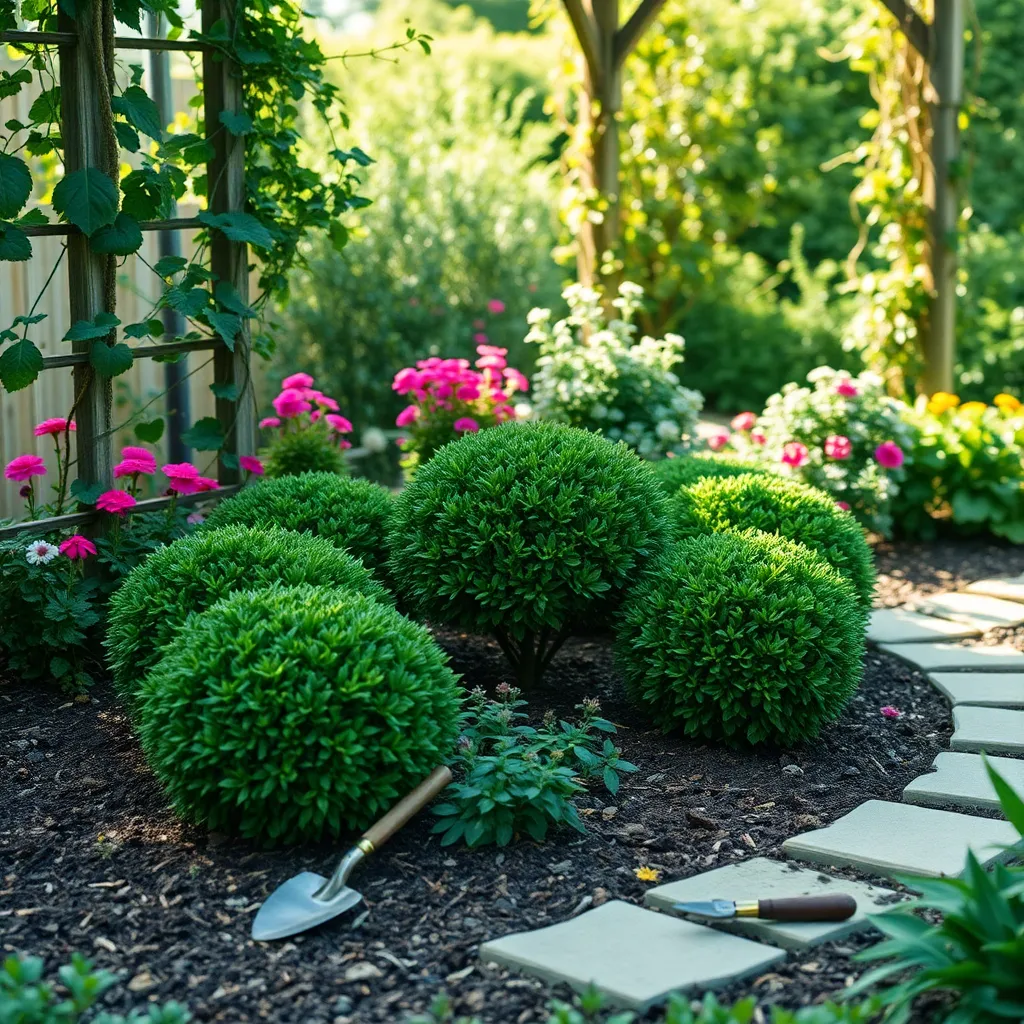
Dwarf boxwoods are an excellent choice for small gardens due to their compact size and evergreen foliage. They are known for their ability to maintain a neat, manicured appearance, making them perfect for borders and small hedges.
To thrive, dwarf boxwoods require well-draining soil and a location that receives partial to full sun. It’s crucial to water them consistently, especially during dry spells, to keep their roots healthy and support their lush growth.
For beginners, a good practice is to mulch around the base of the plants to retain moisture and suppress weeds. More experienced gardeners can shape these shrubs into intricate designs, taking advantage of their slow growth and dense foliage.
Fertilize dwarf boxwoods in early spring with a balanced, slow-release fertilizer to promote vigorous growth throughout the season. Regularly check for signs of pests such as leaf miners and treat them promptly with environmentally friendly solutions to keep your plants healthy and thriving.
Vertical Garden Planters (Space-Saving Design)
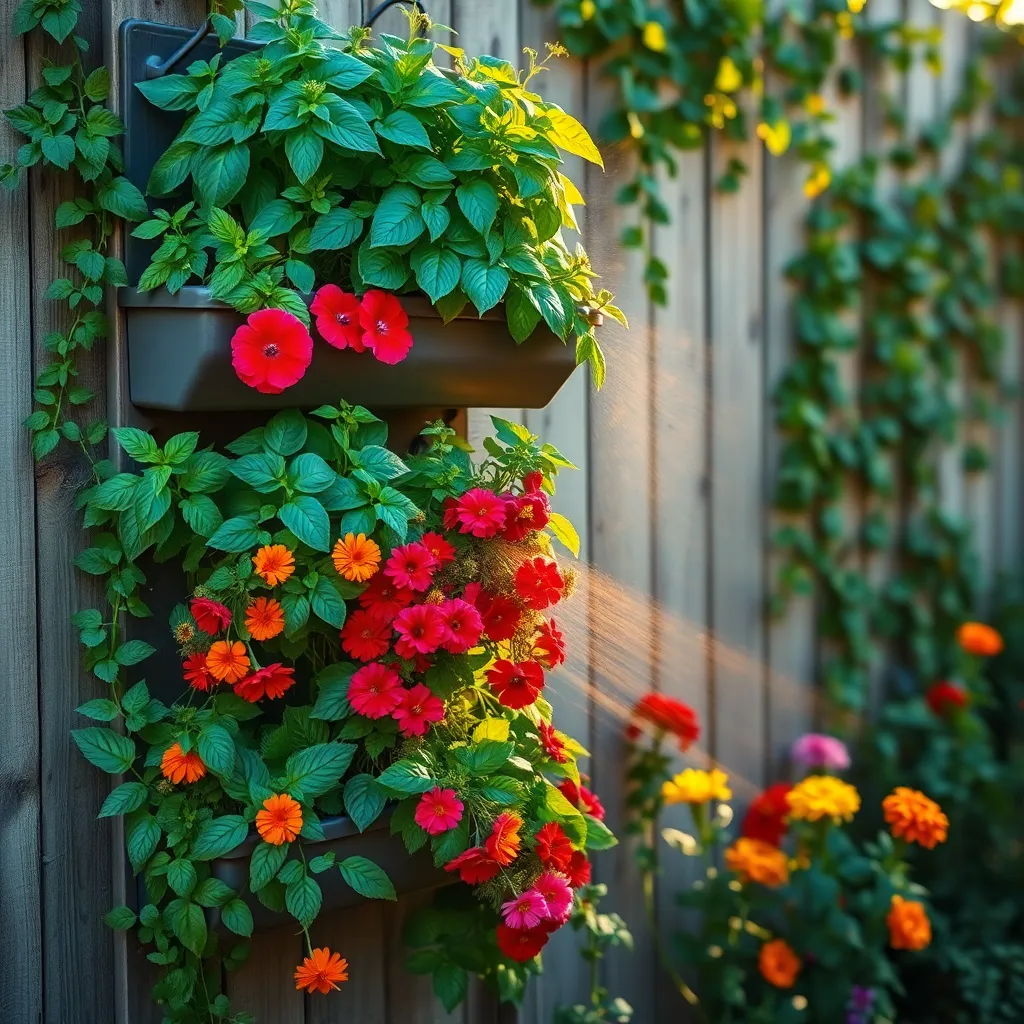
Vertical garden planters are a fantastic way to maximize space in small gardens, allowing you to grow a variety of plants in a limited area. These planters can be attached to walls or freestanding, providing a creative and efficient method to cultivate herbs, flowers, and even vegetables.
When choosing plants for vertical gardening, opt for species that thrive in confined root spaces, such as strawberries, lettuce, and herbs like basil and thyme. Ensure the planter has adequate drainage to prevent waterlogging, which can be detrimental to plant health.
For beginners, start with easy-to-grow plants like succulents or ferns, which require minimal maintenance and are forgiving of occasional watering lapses. Select a high-quality potting mix that retains moisture while allowing for proper airflow, ensuring your plants receive the nutrients they need.
Advanced gardeners might experiment with a hydroponic vertical garden system, which uses nutrient-rich water instead of soil. This method can increase growth rates and yield, though it requires careful monitoring of nutrient levels and pH balance.
Patio Citrus Trees (Fruitful and Fragrant)

Growing citrus trees on your patio can be both a rewarding and aromatic experience. These compact trees not only add a splash of vibrant green to your space but also fill the air with their sweet, citrusy fragrance.
To successfully cultivate patio citrus trees, it’s essential to choose the right variety. Dwarf varieties like Meyer lemon, Calamondin orange, and Bearss lime are ideal as they thrive in containers and require less space.
Place your citrus tree in a spot where it will receive at least six to eight hours of direct sunlight each day. Consistent sunlight is crucial for fruit production and overall plant health, so consider using a grow light if natural light is limited.
When it comes to soil, use a well-draining potting mix specifically formulated for citrus or cacti. Ensure your container has adequate drainage holes to prevent waterlogging, which can lead to root rot.
Water your citrus tree deeply but infrequently, allowing the top inch of soil to dry out between waterings. During the growing season, typically spring and summer, feed your tree with a balanced, slow-release citrus fertilizer to support its fruiting needs.
Herb Spiral (Efficient Use of Vertical Space)
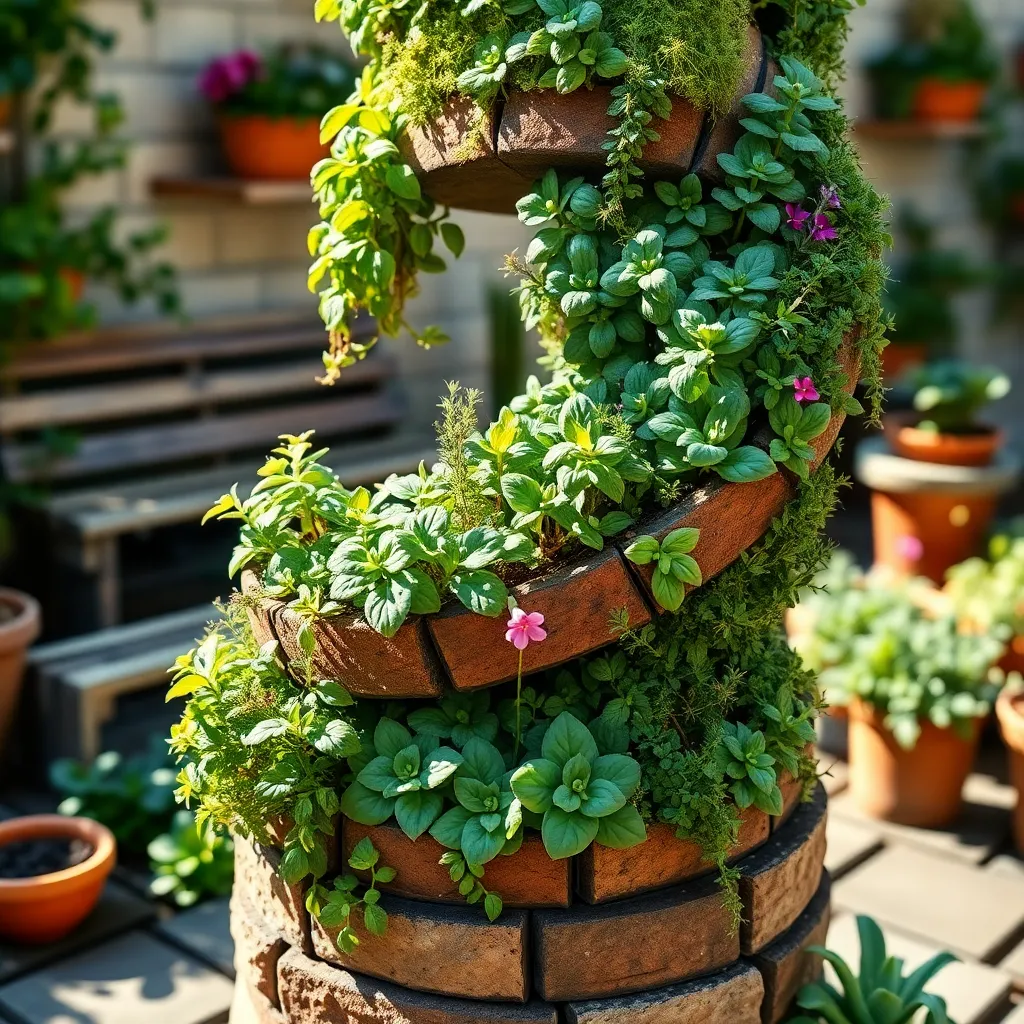
Creating an herb spiral is a clever way to maximize vertical space in a small garden. This design not only saves ground space but also enhances the aesthetic appeal of your garden.
To construct an herb spiral, start by laying a base with bricks or stones in a spiral pattern, gradually building the structure upwards. The height difference allows you to plant a variety of herbs with different sunlight and water needs, where the top is drier and sunnier, and the bottom retains more moisture.
Plants with Mediterranean origins like rosemary and thyme thrive at the top of the spiral. These herbs prefer well-drained soil and can tolerate less frequent watering, making them perfect for the elevated, sunny spots.
In contrast, moisture-loving herbs such as mint and parsley do well at the base, where water naturally collects. Ensure the soil remains consistently moist for these plants, but avoid waterlogging by providing adequate drainage with a mixture of compost and sand.
As an advanced tip, consider integrating companion planting into your herb spiral.
- Basil, for example, can benefit nearby tomatoes by repelling pests.
- Chives can deter aphids, offering natural pest control.
With thoughtful plant placement, your herb spiral can become a thriving ecosystem, providing fresh herbs all season long.
Miniature Roses (Colorful and Petite Blooms)
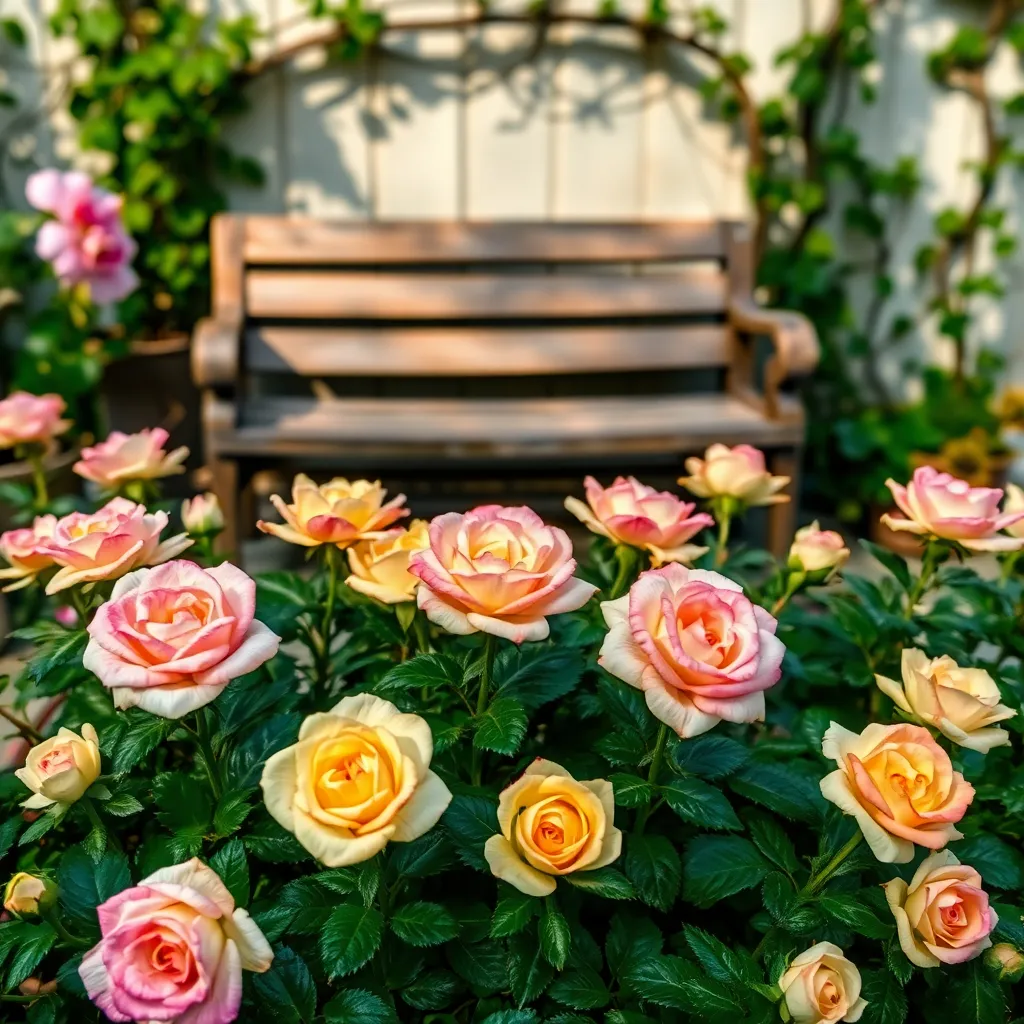
Miniature roses are the perfect choice for small gardens, offering vibrant colors and delicate, petite blooms. These charming plants thrive in containers, allowing for flexible placement in any garden setting.
To successfully grow miniature roses, select a pot with drainage holes and fill it with a well-draining soil mix. A blend of two parts potting soil, one part perlite, and one part coarse sand is ideal for ensuring proper drainage and aeration.
Position your miniature roses in a spot that receives at least six hours of sunlight daily to promote healthy growth and blooming. Regular watering is essential, but be mindful to let the top inch of soil dry out between waterings to prevent root rot.
Fertilize your miniature roses every four to six weeks during the growing season with a balanced, water-soluble fertilizer. For more advanced care, deadhead spent blooms and prune lightly to encourage more abundant flowering and maintain a compact shape.
Conclusion: Growing Success with These Plants
In exploring the best plants for small gardens, we’ve uncovered five key insights that beautifully mirror the essentials of nurturing healthy relationships. First, just as selecting the right plants for your space is crucial, so is choosing the right people to cultivate meaningful connections. Second, understanding the light and water requirements of your plants relates to recognizing and meeting the unique needs of those you care for. Third, pruning promotes growth in plants, much like open communication fosters relationship growth. Fourth, the importance of diversity in your garden reflects the richness variety brings to relationships. Lastly, patience and consistent care lead to flourishing plants and thriving relationships alike.
As your immediate next step, take a moment to reflect on how these insights can enhance your relationships today, perhaps starting with a simple act of appreciation or communication. For continued growth and a handy guide, bookmark this article now as a valuable resource in your relationship toolkit.
Remember, just as gardens transform over time, so too can your relationships flourish with attention and care. Embrace this journey and look forward to a blooming future filled with meaningful connections. Save this article to revisit these insights whenever you need a gentle reminder.

